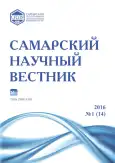Peculiarities of using the demonstration principle in ballet pedagogy
- Authors: Fomkin A.V.1
-
Affiliations:
- Cultural centre «Moskvitch»
- Issue: Vol 5, No 1 (2016)
- Pages: 192-196
- Section: 13.00.00 – Pedagogical Sciences
- URL: https://journals.rcsi.science/2309-4370/article/view/22069
- DOI: https://doi.org/10.17816/snv20161314
- ID: 22069
Cite item
Full Text
Abstract
Demonstration is one of the most important teaching principles. The foundation for the scientific study of this principle was laid by the outstanding pedagogue Ya.A. Komensky, who called it «the golden rule of didactics». Later, Komensky’s ideas were developed by J.H. Pestalozzi, K.D. Ushinsky, and other pedagogues. A special role in clarifying and specifying the functions of demonstration belongs to Russian pedagogues and psychologists developing the ideas of «the unity of consciousness and activity» (S.L. Rubinstein), the theory of activity (A.N. Leontyev), and the theory of gradual formation of mental actions (P.Ya. Galperin). Demonstration has been used in teaching dance since the ancient times, when various visual aids were used to illustrate the teacher’s words. Yet, despite the presence of extensive literature in other areas, in ballet pedagogy the study of demonstration has been limited to just a few researchers – N.I. Tarasov, E.P. Valukina, and A.A. Alferova. This paper presents the first attempt in ballet pedagogy to comprehensively analyse the use of the principle of demonstration in ballet teaching. Drawing on the historical traditions of ballet education, the author shows the leading role of demonstration in teaching professional skills to ballet artists and reveals the essence of the main types of demonstration – figural/«pictorial», verbal, image-based and natural. The paper highlights the leading role of figural demonstration, in which showing of movements is traditionally the main teaching tool. The combination of the four types of demonstration – figural, verbal, image-based and natural – facilitates the visual, audial and motor perception of a movement (or its model, image) by the students allowing them to internalize movements into their psyche and body.
Full Text
##article.viewOnOriginalSite##About the authors
Alexey Viktorovitch Fomkin
Cultural centre «Moskvitch»
Author for correspondence.
Email: fomkin2001@mail.ru
candidate of pedagogical sciences, associate professor, artistic director
Russian Federation, MoscowReferences
- Коменский Я.А. Великая дидактика. Избранные педагогические сочинения. В 2-х т. Т. 1. М., 1982. С. 384.
- Рубинштейн С.Л. Основы общей психологии // Серия: Мастера психологии. СПб.: Питер, 2000. 712 с.
- Леонтьев А.Н. Категория деятельности в современной психологии // Вопросы психологии. М., 1979. № 3.
- Гальперин П.Я., Кабыльницкая С.Л. Экспериментальное формирование внимания. М.: Издательство Московского Университета, 1974. 102 с.
- Тарасов Н.И. Классический танец: Школа мужского исполнительства / Вступительная статья М. Лиепы. Изд. 2-е, испр. и доп. М.: Искусство, 1981. 479 с.
- Валукин Е.П. Система мужского классического танца. М.: ГИТИС, 1999. 456 с.
- Алферов А.А. Педагогические условия использования видеотехники в процессе обучения классическому танцу // Вестник МГУКИ. 2007. № 5. С. 178-181.
- Фомкин А.В. Балетное образование: традиции, история, практика. СПб.: АРБ им. Вагановой, 2013. 508 с.
- «И даже в области балета… Перестройка продолжается». Интервью Е. Федоренко с ректором МГАХ М.К. Леоновой // Газета «Культура», № 44 (7756). 25 ноября - 1 декабря 2010 г. Режим доступа: http://www. balletacademy.ru/www/kult.htm.
- Борисоглебский М.В. Прошлое балетного отделения Петербургского театрального училища, ныне Ленинградского государственного хореографического училища // Материалы по истории русского балета. Т. II. Л., 1939. С. 100, 244.
- Отчет о научно-исследовательской работе «Исследование психологических особенностей артистов балета в овладении профессиональной деятельностью»: Рукопись. СПб., 2013. 147 с.
- Пестов П. Петр Пестов: О времени и о себе // Балет. 2010. № 3.
- Мессерер А.М. Начало педагогической работы: Часть первая. Режим доступа: http://www.bolshoi-theatre.su/legends/asaf-messerer/7.
- Алферов А.А. Педагогические условия использования видеотехники в процессе обучения классическому танцу: автореф. дис. … канд. пед. наук. М., 2007. 22 с.
- Арнхейм Р. Искусство и визуальное восприятие. Режим доступа: http://romanbook.ru/book/7690821/
- Бельский И.Д. «Все совмещается в танце и все постигается через танец» // Советский балет. 1988. № 4.
- Тульчинский Г.Л. Остранение // Проективный философский словарь: Новые термины и понятия. СПб.: Алетейя, 2003. С. 285-286.
- Отчет о научно-исследовательской работе «Особенности мотивации артистов балета»: Рукопись. СПб., 2012. 64 с.








